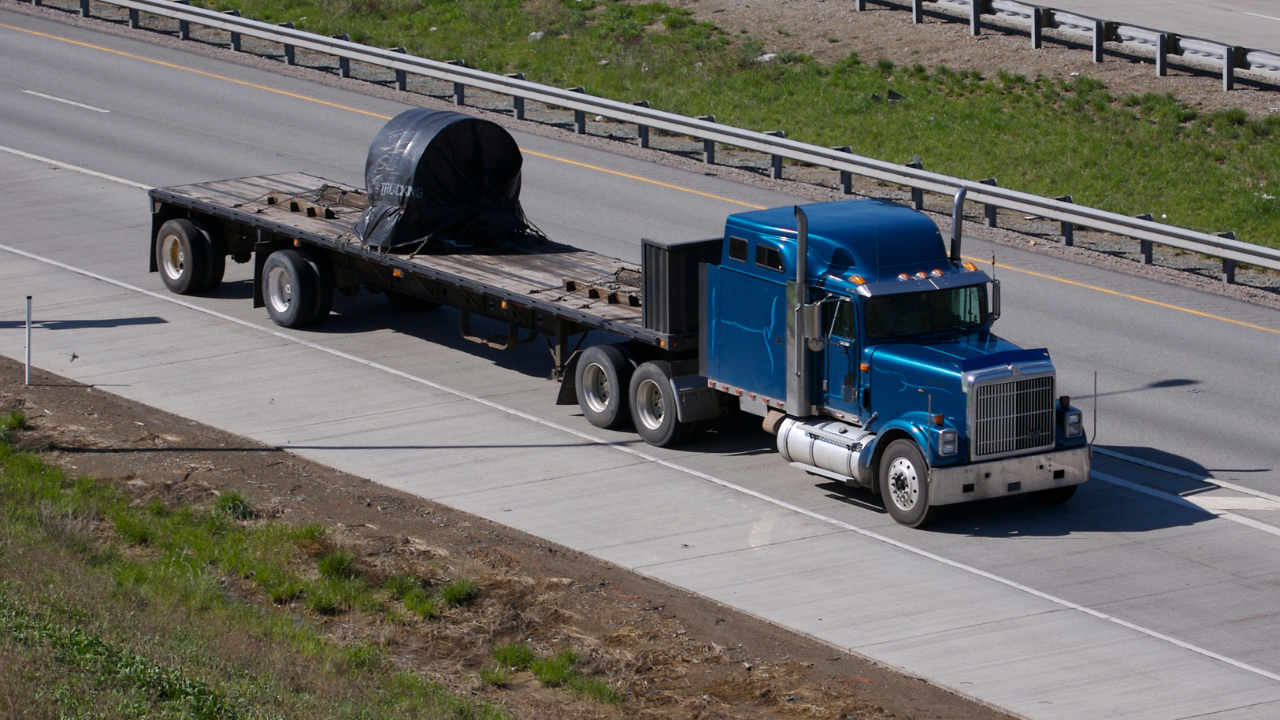
How California’s Strict Emissions Laws Affect Big Rig Insurance Costs
Key Takeaways on the Impact of California’s Emission Standards to Big Rig Insurance Costs:
- California’s emissions laws increase the cost of big rig insurance through vehicle upgrades and compliance requirements.
- Upgrading to emissions-compliant trucks can lower insurance premiums over time.
- Preventive maintenanceRegular and systematic inspection, cleaning, and repair of equipment and facilities to prevent unexp... helps reduce environmental and accident risks, keeping insurance costs down.
- Insurance discountsReductions in insurance premiums offered by insurers to policyholders who meet certain criteria that... for green fleets and usage-based policies offer opportunities for cost savings.
- Working with an experienced broker ensures you find the best commercial truck insurance options.
California has some of the strictest environmental regulations in the country. Its emissions standards directly impact the trucking industry. These rules are designed to reduce air pollution. Especially targeting heavy-duty trucks like big rigs. While these laws aim to protect the environment, they also have an economic effect on trucking businesses. By influencing the cost of big rig insurance.
The effect of California’s emissions laws on big rig insurance costs includes:
- California’s Emissions Regulation
- Why Emission Standard Impacts
- Managing Big Rig Insurance Cost
- Work with an Experienced Insurance BrokerA professional who arranges and negotiates insurance on behalf of clients, potentially useful for tr...
In this article, we will explain how California’s emissions laws can increase the costs of commercial truck insurance policies. The factors at play and what truckers can do to manage these rising expenses.
California’s strict emissions laws are reshaping the trucking industry—and they’re also driving up big rig insurance costs. Stricter regulations on engine standards, fleet upgrades, and compliance penalties mean higher operational expenses, which insurers factor into their rates. In How California’s Emissions Laws Affect Big Rig Insurance Costs, we explore how these regulations impact premiums and what trucking businesses can do to manage rising costs.
California’s Emissions Regulations: A Quick Overview
California’s emissions laws, specifically through the California Air Resources Board (CARB). Focus on reducing harmful pollutants emitted by vehicles. Heavy-duty trucks, including big rigs, must meet strict standards for pollutants. Like nitrogen oxides (NOx) and particulate matter (PM).
The CARB regulations, including the Truck and Bus Regulation and the Diesel Particulate Filter (DPF) requirements. Mandate that trucks operating in the state must adhere to these emissions standards. Vehicles that do not comply may face penalties or be banned from operating in California altogether.
These laws also encourage fleet owners to switch to cleaner technology. Such as electric or alternative-fuel vehicles, which can be a costly investment.
Why Emissions Standards Impact Big Rig Insurance Costs
So, how do California’s emissions laws impact the cost of big rig insurance? There are several ways these regulations influence the insurance premiums for trucking businesses.
1. Increased Vehicle Costs
The cost of complying with emissions standards can be high. Especially if your fleet consists of older trucks that do not meet the latest CARB regulations. Upgrading to newer, cleaner trucks or retrofitting older vehicles with emissions control technology. Diesel Particulate Filters (DPF) can significantly increase your upfront expenses.
Insurance providers view newer, compliant trucks as a lower risk, which can lead to a slight decrease in premiums. However, the overall increase in vehicle costs can still put a strain on your finances.
- Upgrading fleets: Newer trucks with advanced technology tend to be more expensive to repair. Which may raise your insurance premiums despite their compliance.
- Retrofit costs: Retrofitting older trucks to meet emissions standards can be expensive. And may raise concerns with insurers about reliability and increased risk.
2. Environmental LiabilityA financial obligation or debt owed by an individual or business to another entity, typically result... Coverage
With California’s push toward stricter emissions control. There’s also an increased emphasis on environmental liability coverage in commercial truck insurance. This type of coverage protects businesses. From the financial burden of environmental damage claims. Such as accidents leading to fuel or chemical spills that impact the environment. The heightened focus on environmental responsibility means. Trucking businesses may need to expand their coverage. Potentially leading to higher premiums.
- Additional coverage needs: Insurers may recommend or even require higher coverage limits for environmental liability. Especially for companies hauling hazardous materials.
- Higher risks, higher premiums: Transporting materials that could harm the environment. If spilled will generally lead to increased insurance costs.
3. Higher Maintenance Costs and Insurance Risks
Trucks operating in California must undergo regular maintenance to comply with emissions standards. This includes maintaining DPFs and keeping emissions systems in check. Also ensuring that onboard diagnostic systems (OBD) are functioning correctly.
Regular maintenance helps reduce emissions and improve the performance of commercial vehicles. It also adds operational costs. Insurance companies may factor in these maintenance costs when calculating your premiums. Especially if poor maintenance leads to breakdowns or accidents.
- Risk of non-compliance: Trucks that fail to meet emissions standards could be pulled from the road. Which can lead to lost revenue and increased insurance costs due to interruptions in business.
- Costly repairs: Maintaining emissions control systems is vital but expensive repairs. Non-compliance can lead to increased downtime, further influencing insurance premiums.
4. Penalties and Fines for Non-Compliance
Trucking companies that fail to meet California’s emissions standards face penalties. Including heavy fines and even the suspension of operating permits. Any business with a history of non-compliance may be considered a higher risk by insurance providers. Leading to higher big rig insurance premiums.
- Compliance history matters: Insurance companies may consider your company’s compliance record when determining your premiums. A history of violations can make your business appear riskier to insure.
- Avoiding penalties: Complying with emissions regulations not only avoids fines. But it can also help keep insurance costs under control. By reducing the likelihood of environmental claims or accidents related to poor truck maintenance.
How to Manage Big Rig Insurance Costs Under California’s Emissions Laws
Although emissions regulations may increase the cost of commercial truck insurance. There are steps you can take to manage these costs. Proactive strategies can help reduce the financial burden on your trucking business.
1. Upgrade to Emissions-Compliant Trucks
One of the most effective ways to manage rising insurance costs is by investing in emissions-compliant trucks. Modern trucks with the latest emissions technology not only meet California’s regulations. But are often viewed favorably by insurance providers. While the upfront cost of purchasing or leasing these trucks is high. They generally require less maintenance and pose a lower environmental risk. Which can help reduce your insurance premiums in the long run.
- Invest in newer vehicles: Newer trucks with advanced safety and emissions features can help lower insurance costs. By reducing accident risks and improving reliability.
- Consider electric or alternative-fuel options: Alternative fuel trucks, such as electric or hybrid vehicles. May be eligible for additional insurance discounts due to their lower environmental impact.
2. Focus on Preventive Maintenance
Proper truck maintenance is essential not only for meeting emissions standards. But also for keeping your insurance costs in check. Regular preventive maintenance helps prevent breakdowns and accidents, which can lower your insurance premiums over time.
- Stick to a maintenance schedule: Regularly servicing your emissions systems, brakes, tires, and other key components. Can reduce the likelihood of accidents and environmental damage, which can help you avoid premiumThe amount paid by the insured to the insurance company in exchange for insurance coverage, typicall... hikes.
- Document maintenance: Keep detailed records of maintenance activities to show insurance providers. That your fleet is well-maintained and compliant with emissions laws.
3. Take Advantage of Insurance Discounts for Green Fleets
Many insurance companies now offer discounts for businesses. That operate green or eco-friendly fleets. By investing in emissions-compliant trucks and using environmentally responsible practices. You may qualify for lower premiums.
- Ask about green fleet discounts: Insurance providers may offer lower rates for businesses that meet certain eco-friendly standards. Such as using low-emission trucks or hybrid vehicles.
- Explore alternative coverage options: Some insurers specialize in providing policies for companies committed to environmental sustainability. Which may result in more competitive rates.
4. Consider Usage-Based Insurance Policies
Usage-based insurance policies, where premiums are based on how much you drive. Can be an effective way to reduce costs. Especially if your trucking business operates in California for only part of the year. These policies calculate premiums based on miles driven or hours of operation. Which can help you better manage insurance costs during slower seasons.
- Pay-as-you-go insurance: This option can reduce costs for trucking companies. That operate seasonally or have variable workloads.
- Monitor driving patterns: Tracking miles and routes can help you optimize your insurance coverage. Based on actual usage, reducing the financial impact of high premiums.
5. Work with an Experienced Insurance Broker
Navigating the complexities of California’s emissions laws and their impact on big rig insurance can be challenging. Especially for trucking businesses new to the state’s regulations. Working with an experienced insurance broker can help you find the best policy options for your specific needs. Ensuring you’re fully compliant with emissions standards.
- Seek expert advice: A broker familiar with California’s emissions regulations can help you avoid costly coverage gaps. And find affordable options that meet your compliance needs.
- Review coverage regularly: As emissions standards and insurance offerings evolve. Staying in touch with your broker ensures that your coverage remains up-to-date and cost-effective.
Navigating California’s Emissions Laws and Insurance Costs
California’s strict emissions laws have a clear impact on the cost of big rig insurance for trucking companies operating in the state. From increased vehicle maintenanceRegular and necessary upkeep required to ensure the safe and efficient operation of a truck, typical... to the need for expanded environmental liability coverage. These regulations can lead to higher premiums for commercial truck insurance. However, by staying compliant, investing in green technology, and implementing proactive cost-management strategies. Trucking businesses can navigate these challenges while keeping their insurance expenses under control.
SoCal Truck Insurance is here to guide you through the complexities of commercial truck insurance in California. Contact us today to identify potential savings and provide tailored insurance solutions that meet your specific needs. Because with the right insurance partner, you can drive your business forward, even in the face of regulatory challenges.


